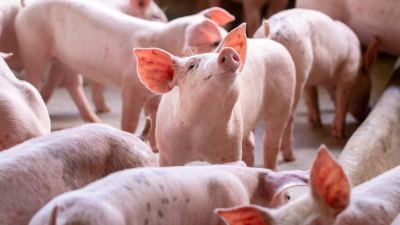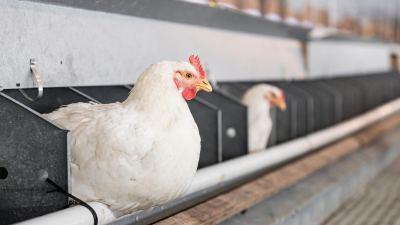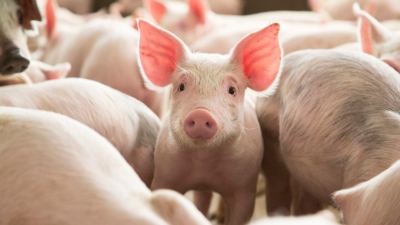Mycotoxin insights to empower your nutritional strategy

In a recent webinar to launch the 2024 Alltech Asia Import Risk Analysis, our experts shared the following insights during the Q&A session:
1. What specific strategies can livestock/feed producers and crop farmers employ to control mycotoxins in their feed?
Pre-harvest:
- Fungus-resistant crops: Develop crop varieties that are resistant to fungal infestations.
- Field management: Control fungal infections during crop growth.
- Moisture control: Maintain a low moisture content in seeds during storage.
- Temperature: Store commodities at lower temperatures when possible.
- Fungicides and preservatives: Use various solutions to help inhibit fungal growth.
Post-harvest:
- Drying and storage: Maintain optimal drying and storage conditions to prevent fungal growth.
- Mold inhibition: A variety of solutions, including Mold-Zap®, are available to help reduce mold levels in stored grains.
The right combination of mitigation and control strategies is essential to effectively combat the mycotoxin threat. Some strategies have to do with management; for instance, suitable pre-harvest, harvest and post-harvest schedules are helpful. Other strategies rely on new innovations such as mycotoxin binders. A broad-spectrum mycotoxin binder such as Alltech’s Mycosorb®, which is based on leading-edge yeast cell wall extract (YCWE) technology, can be a game-changer, adsorbing numerous mycotoxins from the gastrointestinal tract simultaneously.
Adding to their efficacy, Mycosorb and other Alltech mycotoxin technologies are constantly being updated to reflect new research findings and to target new, emerging mycotoxins.
2. Does Alltech’s mycotoxin data include information about grains that have been genetically modified? If so, to what degree does mycotoxin contamination impact genetically modified crops/grains?
- Agricultural biotechnology has made notable advances in reducing mycotoxins over the past few years. While transgenic Bt corn (corn that has been genetically engineered to contain Bacillus thuringiensis) has been known for years to reduce the threat of the mycotoxin fumonisin, new studies have revealed its ability to combat aflatoxin as well. Other transgenic and RNA-interference corn hybrids specifically target mycotoxin reduction, and gene editing through clustered regularly interspaced short palindromic repeats (CRISPR) has focused on preventing mycotoxin biosynthesis (Wu et al., 2022).
- Analyses of GMO crops are certainly included in Alltech’s database — but most of the time, the producers who submit samples do not specify whether or not their crops are genetically modified. As such, we cannot generate statistics that fully answer that question.
3. How has the methodology behind Alltech’s mycotoxin assessments changed with the increasing unpredictability of adverse weather conditions and recent geopolitical events?
We are always working hard to implement the most up-to-date analytical methods for as many mycotoxins as possible in our service portfolio. The Alltech 37+® methodology is continuously evolving; we are currently lowering our limit of detection (LOD) and limit of quantification (LOQ) levels and are also adding new mycotoxins to the panel of toxins analyzed by the lab. Alltech® RAPIREAD™ is another valuable asset, providing quick insight into mycotoxin risks on-farm so that producers can continually protect their feeds.
4. How accurate is Alltech’s risk equivalent quantity (REQ), and why is it a useful tool?
Alltech’s REQ is a calculation used to assess the risk of multiple mycotoxin challenges. The logic behind maintaining an REQ is that this number can help us better understand the threat these mycotoxins, both individually and in combination, pose to animal performance and health. With this knowledge in hand, producers can make better management decisions on-farm.
5. Some farms utilize mycotoxin binders or mold inhibitors. Are any of these solutions made specifically for sows? If so, how should they be offered to help reduce the number of sow abortions, stillbirths and weak piglets?
As breeding animals, sows can benefit from being offered Mycosorb A+®. If clinical signs of mycotoxin contamination appear, we recommend utilizing a treatment dosage of 1.5–2 kg/ton, and we also recommend testing the sow feed through the Alltech 37+ lab as soon as possible.
6. How often should I be sampling incoming grains with rapid test kits?
Regularly and routinely testing each new batch of feed entering the feed mill or farm is important. We also recommend testing raw materials again if they have been stored for a while, as the mycotoxin profile can change over time. To mitigate mycotoxin contamination during storage, we recommend using liquid mold inhibitors for raw materials and dry mold inhibitors for finished feeds.
Feed mills sometimes use stale grains, which are more likely to be contaminated with mold and bacteria than other raw materials are. Testing through Alltech RAPIREAD and/or the Alltech 37+ laboratory is crucial here, and we recommend testing these types of high-risk ingredients more often.
7. What is the lowest inclusion rate you recommend when using a mycotoxin binder?
The lowest inclusion rate recommended for Mycosorb A+ and Mycosorb® LR is 0.5 kg/ton or 10 g/cow/day.
8. How quickly does Alltech update its mycotoxin risk data if a major global event disrupts grain shipments?
We prioritize prompt response to field challenges and other potential obstacles. With a network of over 37 laboratories worldwide, we can ensure expedited delivery of results. To bolster our capacity for swift mycotoxin risk assessment, we've deployed over 200 Raptor® test machines globally; these yield results within a mere 15 minutes. Additionally, in the event of supply chain disruptions, our globally distributed local teams are poised to swiftly employ rapid testing methods to assist customers.
9. The threat of mycotoxins is always present. Besides adsorbents, what other products are effective at combatting the intestinal damage and immunosuppression caused by mycotoxins?
We recommend Sel-Plex®, Actigen® and Yea-Sacc® to counteract mycotoxin damage and maximize health and productivity overall.
10. What is the best solution for controlling deoxynivalenol (DON)?
It’s important to realize that DON is only one mycotoxin of many that may be present in feed. Its metabolic activity and impact on animal health and productivity will very much depend on whether other mycotoxins are present. The best strategy is prevention. First, conduct mycotoxin testing to assess risk, and avoid giving feeds that are highly contaminated with DON to your animals. Then employ a mycotoxin binder, which can reduce the risk by approximately 70%. Alltech’s Mycosorb line of solutions includes multi-mycotoxin binders that can bind a wide range of mycotoxins, including DON.
11. What is the best method for correctly collecting and testing samples, and how frequently should sampling and testing take place?
For best results, follow Alltech's guide to best-practice sampling techniques for mycotoxin testing. Contact your Alltech sales representative for a copy of the guide.
For more information about mycotoxins and how to address the mycotoxin threat for your business, please get in touch with our team. You can also find resources at knowmycotoxins.com.















